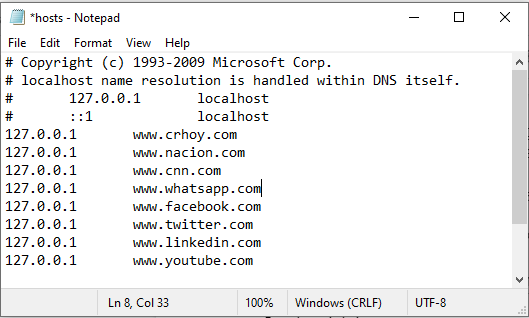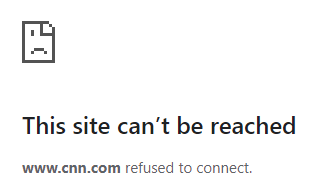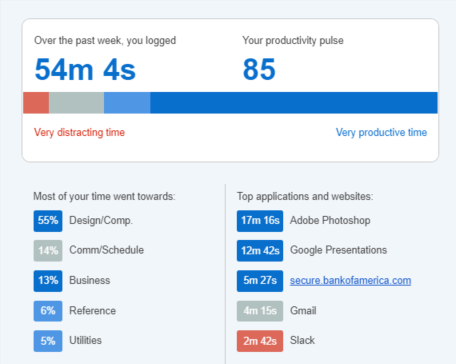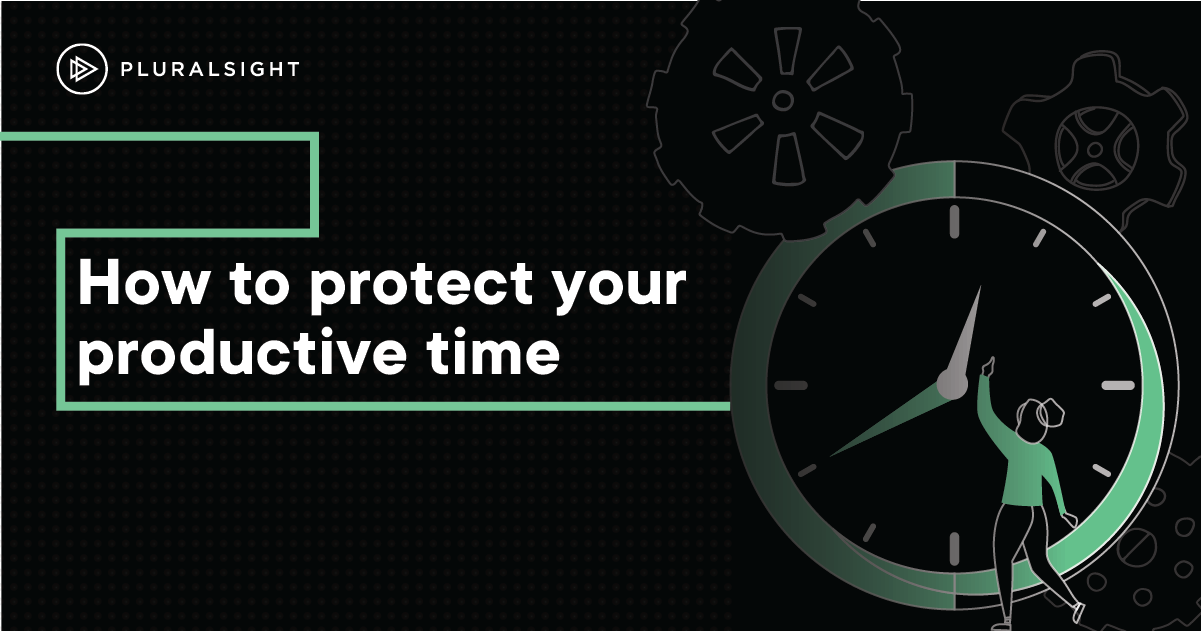Author: Xavier Morera
If you are the kind of person who builds epic stuff all the time without a problem, I admire you. The world needs more people like you. You can stop reading now.
But more likely, you’re the kind of person that has half a dozen domains you’ve purchased for that future project, more than one JIRA or Trello board with a few specs, and maybe one or two WordPress installations with two or three published blog posts at the most.
You may know one of those people that always has a “million-dollar idea that’s going to change the world” that they are just about to build—an idea that will help them become the next award-winning entrepreneur and retire in Costa Rica. Yet one year later, they still are in the exact same place.
Don’t feel bad. I’ve been there, too.
You may have the best intentions, but what you lack is “the time to work on this project.”
Let me tell you a secret.
In many cases, you do not lack the time. You may just not be as productive as you need to be to deliver according to your intentions.
You have to fiercely protect your productive time and put in place the appropriate systems to help you deliver constantly, predictably and at a high level.
Because you do not build a reputation on what you will do. You build a reputation on what you have done. You do not rise to the level of your expectations; you fall to the level of the systems you apply on your productive time.
Protecting your time
Time is the new currency. Everyone seems to be short of time. I wish I had a penny for every time I hear phrases like “if I had one more day,” “I couldn’t complete the task because I was not allocated sufficient time” or any other similar complaint.
Yet some people do seem to be able to complete their tasks on time and with excellent results.
How do they do it?
The secret sauce is allocating time to focused work.
The world is full of distractions, and to be able to create, you need to focus on the task at hand.
I don’t want to sound harsh, but multitasking is a myth. If you are doing several things “at the same time,” you are not multitasking. You are working on several things, one at a time, and wasting time switching between your tasks.
Every time you change from one task to another, it takes time to “catch up.” Truly inspiring and remarkable work takes effort and requires focus.
How can you find this time and focus? These are three techniques that have worked for me:
1. Core working hours
A few years ago, I learned the concept of core working hours at a large multinational company. Here’s how it worked.
Every day, the team met for a daily morning standup-our scrum meeting. Once everyone knew well what they had to do and had removed any impediments that may have come up, each team member’s calendar had three and a half hours blocked for working exclusively on their assigned tasks.
No meetings, no distractions, just 100% pure productive and satisfying work. Meetings and other activities are arranged for the afternoon.
It should be said, this works especially well for those people that are producers, where their work is primarily an individual contribution to creating something like an application. Developers fall into this category. Other roles that involve mostly communication and coordination, like a product or project manager, may prefer asynchronous connection and may not find core working hours as useful.
But the point still remains: If you are a knowledge worker, you can benefit significantly from having core working hours.
You might be saying, “In reality, that’d be great, but I can’t work that way.” Maybe your way of working requires a whole lot more interaction. Maybe peer programming or mentoring is entrenched into your company’s way of working. Perhaps you need your team members to answer emails or Slack messages fast to avoid delaying others.
What then?
2. Pomodoro technique or something similar
There are several techniques available that divide your focused work into chunks, one of the more popular being the Pomodoro technique.
Here’s how the technique works:
- Get a timer. It does not have to be a fancy, digital timer. (In fact, the Pomodoro timer was a kitchen timer shaped like a tomato.)
- Set the timer to a specific time interval, during which you work on one task and only one task. No interruptions, no context switching, no calls, no email, nothing except the task at hand. Twenty-five minutes is a good amount of time.
- Once the focused time completes, you then get a small break during which you can go to the bathroom, get a coffee, answer emails. Five minutes works well.
- You then set the timer again and keep moving forward.
If you think 25 minutes is “too little,” I dare you to try it. You’ll find 25 minutes of focused work is extremely difficult.
Your brain will fight right and left to pick up the phone, open Twitter and scour the news, telling itself just one more scroll or click in social media—which takes me to my next point.
3. Blocking distractions
I’ve never been able to easily sit down and work, work, work.
I can sit down and work uninterrupted for about 30 seconds before feeling the urge to do something else.
There are several ways of going about this issue. For example, there are applications that allow you to turn on focused time. When you turn it on, it’s possible to block sites that will only allow you to waste your time.
However, some of these apps are not free. In my case, I used a very down-to-earth and free solution. I modified the hosts file in my machine and added those sites that I know for sure that I use to waste time.

The list includes local newspapers and social media. Now, every time that I automatically open a new tab and type in the address of my “time-waster,” I get a connection refused error that kindly reminds me that I am trying to do something that I am not supposed to be doing.

“Remind me” is a polite way of saying that it slaps me in the face (in a good way) and reminds me I should be in productive mode.
Techniques and tools for improving productivity are important, but how do you identify what shouldn’t be part of your productive mode in the first place?
You can’t improve what you don’t measure
An important part of knowing how to use your time in the most productive way is to identify your “time sucks” or “rabbit holes.”
For this step, you may need to use an application that monitors your activity and classifies them as either very distracting, distracting, neutral, productive or very productive.
In my case, I review at the end of the week and understand where it is that I am spending time that could be best put to use somewhere else. I also get a productivity score, which means that I just gamified my week as I try to get a higher productivity pulse with an acceptable number of hours worked per week.

How much is an acceptable amount of hours?
This varies a lot from human being to human being. In my personal case, I feel that a week with anywhere between 40 to 60 hours of work is reasonable.
In my opinion, it’s less important to think about hours than it is to consider “where did my time go?” I analyze my tasks to determine if I am putting a lot of time and effort into my work, but perhaps not being as efficient as I could be.
It is quite plausible that I am doing a lot of work but perhaps not delivering as I should, and it usually comes down to one of two factors: distractions and meetings.
Eliminating distractions
Notifications are a productivity killer. Each time you get distracted because of a notification, you lose your focus, and it takes many minutes to get “back into the zone.”
Turn off notifications as much as possible and focus on your work.
Determine which meetings are essential
Back-to-back meetings all day long. Meeting after meeting. Meetings to plan more meetings. If you’ve ever had a day that looks like this, you are not alone. Meetings are one of the biggest double-edged swords in business.
A meeting can be extremely beneficial, allowing you to get the information that you need while getting the chance to interact with key players in your project. A meeting can also be a total time-waster.
The impact of one poorly crafted meeting can quickly compound. Ten people in a useless meeting? That’s 10 times the productivity lost to the company. That’s real hours thrown away.
So what should you do?
Determine if the meeting could be replaced by email. Send out the information in advance. Your peers will have time to go through the information, write down their questions and then you can have a quick meeting to answer any outstanding questions.
If that’s not possible, then make sure that the meeting invitation lays out very clearly what the meeting is about and how to prepare in advance. This avoids having to plan another meeting.
Finally, invite only those who have something valuable to add or take away from the meeting. Don’t invite everyone on the team. This might be tricky at first, as some team members might feel like they are “left out.” However, if you make it clear that you are optimizing meeting time, then it will be okay.
Investing your time instead of wasting your time
Every one of us has only 24 hours a day. 1,440 minutes. 86,400 seconds. It’s up to you to decide how to invest your time instead of wasting it.
Go build something epic.
